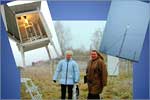|
Weather Station
VIRTUAL TOUR
Russian
| Study Weather Station (WS) was founded in September
2007by a famous scientist, OSUТs scientific work and research activity principal,
physics and mathematics professor Sergey Nikolaevich Letuta. |
|
|
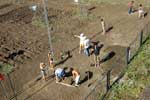
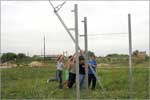 |
|
The Weather Station ground is
under
construction, August, 2008 |
|
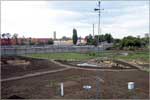 |
|
View to the WS and Botanical Garden
from a cathead |
The WS is situated in the
southern part of the study-scientific-industrial
complex of OSU, in the are
of the Botanical garden.
The Weather Station ground is not large but it is standard (26
m×26 m).
This ground is the place where the instruments and equipment are
installed,
several instruments are indoors. The ground is situated on the
height of 110
meters from the sea level, its surface has been thoroughly
flattened and
tidied up. The students of Geography and Regional studies
Department of Geography
and Geology faculty will have study and summer practice on the
special program of
СClimatology and MeteorologyТ subject.The WSТs workers give
tours around the
territory to students, schoolchildren and anybody who wishes
that. Let us start a detailed tour.
|
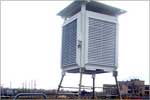 |
 |
|
Stevenson
scree |
Interior of a Stevenson screen |
|
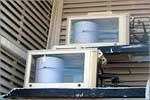 |
|
Stevenson
screen with self-readers Ц
hygrograph and thermograph |
The main element of the ground
is a Stevenson screen. It is so constructed that
the thermometers and other instruments are two meters high above
the ground Ц
in the low layer of air. The box protects theinstruments from
precipitation, strong
wind and sun radiation. It is painted white and has special
Venetian blind. It is
worthwhile to say that as usual stations ours has two Stevenson
screens. There
are thermometers, a hygrometer, a psychrometer in the first one
and a thermograph,
a hydrograph (self-writing instruments which read and record air
temperature and
humidity automatically) in the second one.On the so called Уsite
without plants coverФ
soil temperature on the ground surface and at different depthsis
measured.Ordinary,
minimum, and maximum thermometers read temperature of the soil
surface. In the
winter they are put on snow.
|
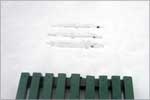
 |
|
Maximal,
minimal and ordinary soil thermometers (on the surface
of snow and ground) |
|
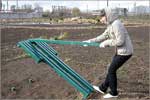
 |
|
SavinovТs soil thermometers |
In meteorology
they measure temperature of soil surface as well as temperature
in
depth. For this there are special instruments Ц SavinovТs
thermometers and a pulling
thermometer. SavinovТs thermometers are only used during warm
time of the year because
theyТre fragile, they are set at depths of 5, 10, 15, and 20
centimeters. These
thermometers as well as other instruments are installed by our
engineer on weather
instruments Grigoriy Mikhailovich Zhiliaev. It is important to
admit that all the
instruments are checked at the Metrology and Standardization
Center. If the instruments
read differently from standards correction is made. All the
thermometers are oriented
from East towards West.
|
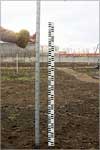 |
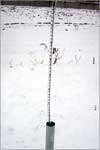 |
|
Permanently-mounted
and movable snow stakes |
Frozen soil meter Ц for measuring the depth of frost
soil |
|
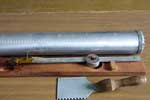 |
|
Snow
gauge |
At every WS
snow measuring stakes are installed for winter period. There are
four of
them at our ground: three for snow reading and one at the frost
soil meter.
A snow gauge is supposed to read height and mass of snow sample.
It consists of scales
and a metal cylinder to take snow samples and read its volume.
Snow density is measured
by its mass per out of volume.
|
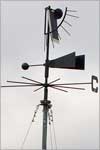 |
 |
|
VildТs weatherwane on a 10 meter mast |
Hand anemometer
|
Every WS has a high mast. On it
there is a wind measuring instrument Ц VildТs
weathervane. At a WS there are two kinds of weathervanes Ц one
with a heavy board and
another with a light one. Two weathervanes give opportunity to
read different speeds of
wind. The one with the light board measures wind speed up to 20
m/s, the one with the
heavy board Ц up to 40 m/s. As the wind rarely blows at the
speed more than 20 m/s in
Orenburg (mean year wind speed is 4 m/s), only the weathervane
with the light board is
installed at our WS.
Weathervane is very easy to use. It is set up in the northern
part of the ground. On the
photo the wind blows from the south, to read that we look at the
counter-balance (the ball),
and the wind speed is 2-3 m/s (we say that according to which
pin to the board is diverging).
СThe Directions for WSs and PostsТ (it is the main document
setting rules and methods of
functioning of the WSs) recommends using VildТs weathervane in
case of breakdown of all
the wind measuring instruments.
Wind speed is also measured by another way Ц with a hand
anemometer.
Also at our MS the following observations are conducted:
Х Rainfall with a raingauge. Precipitation collector is a
special cylinder bucket where rain
gets. It is protected against wind by special plates. Twice a
day precipitation is poured into
a special rain measuring glass, each line is 1 mm. If
precipitation is 50 mm within 12 hours
this is considered to be a dangerous weather phenomenon which
can be a serious threat to
citizensТ lives and health.
|
 |
 |
|
Rain gauge |
Graduated rain cylinder |
|
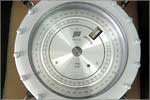 |
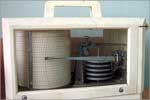 |
|
Aneroid-barometer |
Barograph |
Х Atmospheric
pressure is read by an aneroid-barometer and a barograph which
are set
indoors.
Х Air temperature including maximal and minimal is read by the
thermometers which are
installed in the Stevenson screen. According to dry and wet
thermometers with the help of
special СPsychrometric chartsТ we find air humidity
characteristics (relative and absolute
humidity, dew point, saturation deficit). For instance the dry
thermometer reads 7,2∞C and
the wet one - 6,5∞C the dew point is 5,6∞C, absolute humidity is
90%, and saturation
deficit is 1,1 hPa.
|
 |
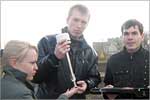 |
|
Psychrometric charts |
Assman psychrometer |
|
 |
|
Clouds Album |
For reading air
humidity we also use Assman psychrometer which can be carried to
different
places in order to study micro climate. For example we suppose
we will manage to find so
called Сwarmth islandТ above the central part of the city that
causes Сcity breezeТ
influencing the air pollution especially in summer in this part
of the city.
Х The shape of clouds is defined visually, after that we collate
the data with the
International СClouds AlbumТ. We are planning to design a
program on observing mother-of-pearl
and silver clouds Ц these unique and mysterious Сsky
decorationsТ.
Х We also observe dangerous atmospheric phenomena: squalls,
thunder-storms, blizzards, fogs,
hazes, smog, and sand storms.
Х We keep observation of optical phenomena: various halos and so
on. Technically speaking
it is possible to see moon rainbow (we know about it from
AristotelТs СMeteorologicaТ),
but we have never seen it.
Х The horizontal visibility is observed with the help of
landmarks, distances to them were
measured beforehand.
Х The sunshine duration is measured by a sunshine recorder which
consists of a glass ball
focusing the sunrays and burning a line on a paper stripe.
According to the line length on
this stripe they count the sunshine duration. In Orenburg there
are more than 2000 hours
of sunshine a year Ц almost like in the Crimea.
|
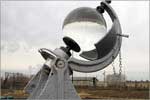 |
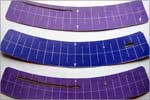 |
|
Sunshine recorder |
Paper stripes with burnt lines
|
|
 |
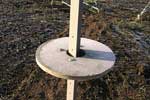 |
|
Black ice machine |
Frost on the black ice machine |
All the observation and
reading are conducted in accordance with international and
domestic rules prescribed by WMO and RosHydromet. Apart from
standard programs
our WS keep some unique observations, such as measuring of
frozen soil depth
(with a frozen soil meter). It is important to notice that
frozen soil meter observations
begin after the mean day temperature drops lower than 0∞C (in
the autumn of 2008 it
happened on 6 November). We also observe the ice and frost
formation on the special black
ice machine. The sheet of ice is read by the depth of ice on
wires and by the water
volume after melting of this ice.
|
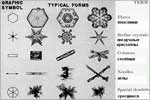 |
|
Classification of solid atmospheric precipitation of the
International Panel |
Our program also includes the
study of solid atmospheric precipitation Ц its
classification according to the Instructions of the
International Panel on Ice and Snow,
and explanation why their forms are so different and unusual.
In order to provide automatical processing and logical control
of the weather data,
and in order to issue the meteorological bulletin, an original
software program
СSWS-OSUТ is being designed currently.
Regular observation program gives important data which allows to
solve a wide range of
scientific and applied questions in complex.
It is worth to notice that the Study Weather Station can be a
considerable link of
the Russian Emergency Ministry at detecting and preventing
dangerous and unfavourable
weather phenomena (hurricane-force winds, squalls, heavy rain
and hail and so on),
that is it can be a reliable Уweather sentryФ in the north of
Orenburg.
These preventions will be able to decrease economical loss from
the dangerous phenomena
and peopleТs health will be kept as well.
Climatologists need the data provided by the WS for studying the
climate of Orenburg,
for estimating the dynamics of the climate conditions in the
city with the population
of a half a million. According to the data, recommendations for
architects and of course
for the cityТs essential services can be developed.



























